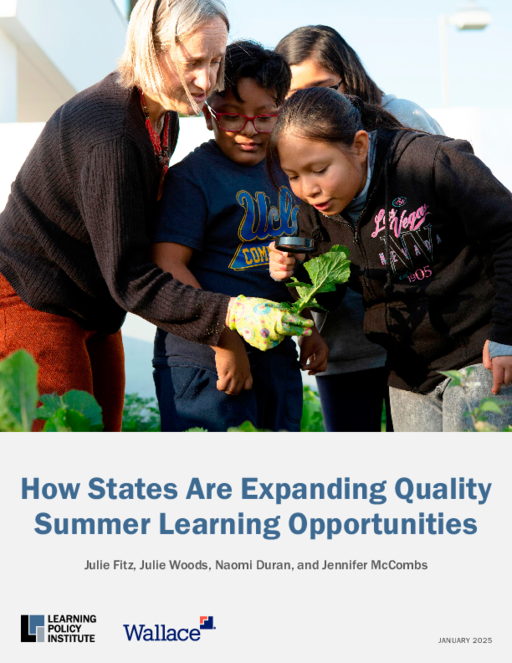Back to Overview
How States Are Expanding Quality Summer Learning Opportunities
Table of Contents
- Author(s)
- Julie Fitz, Julie Woods, Naomi Duran, and Jennifer McCombs
- Publisher(s)
- The Learning Policy Institute
Page Count
84 pages
- DOI Link
- https://doi.org/10.54300/910.329
Implementation Tips
- Articulating clear goals for summer learning investments–and linking those goals with broader state priorities–can help build state support for summer learning initiatives.
- Building coalitions of key summer stakeholders—including advocacy organizations, state government leaders, and program providers—can help generate buy-in for investment through information sharing, collaborative planning, and collective advocacy.
- Reducing the administrative burden of summer learning grant applications–for example, simplifying application procedures and reporting requirements–can make it easier for smaller and/or less experienced programs to access state grant funds.
- Using legislation and grant requirements to prioritize summer learning investments and minimize participation barriers can help ensure programming reaches the students who stand to benefit most (e.g., students performing below grade level and those from low-income families, etc.)
- Issuing guidance on summer learning best practices and providing access to technical assistance can promote high quality summer learning programming.
- Leveraging program data by highlighting positive outcomes from funded programs or by illustrating the ongoing need for quality summer opportunities can help strengthen summer learning advocacy efforts.
Topics:

